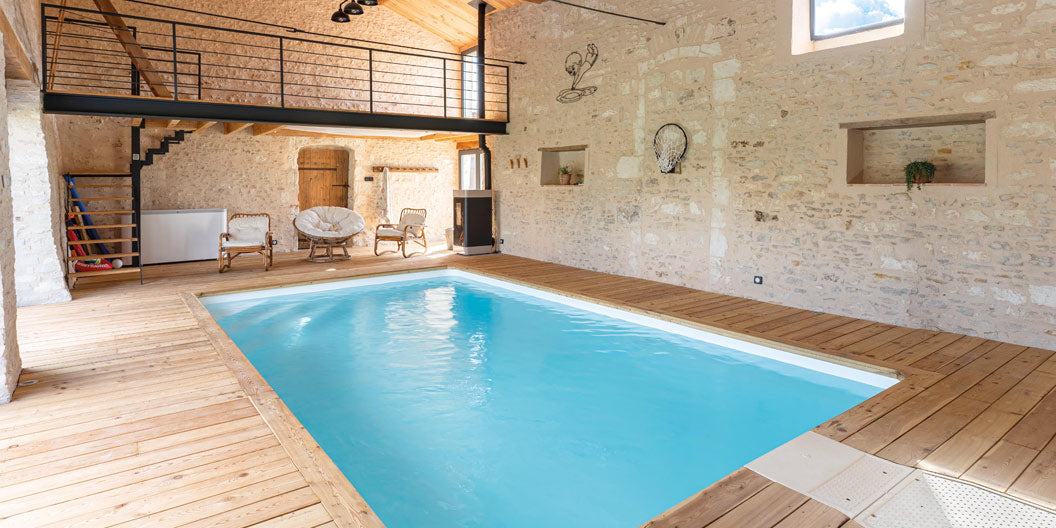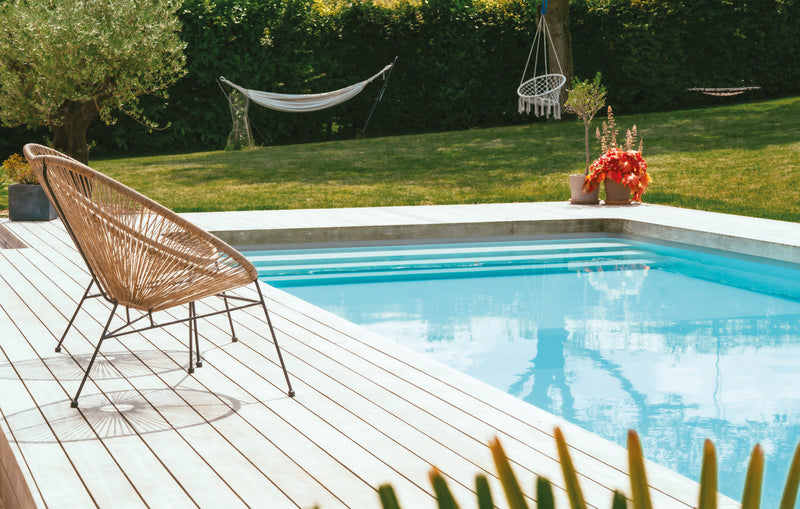- Welcome
- Desjoyaux advice
- fr_FR
-
Indoor pool and dehumidification
Indoor pool and dehumidification
Posté leTo enjoy your pool all year round and whatever the weather, there's nothing better than an indoor pool, which, as its name suggests, is built inside a building. You can enjoy swimming in the middle of winter when the snow is falling outside.

But be careful, to fully enjoy the happiness brought by your indoor pool, you will need to equip yourself a little more than for an outdoor pool , for example by installing a dehumidifier.
Why install a dehumidifier?
The presence of a swimming pool in a closed room will necessarily bring a humidity level much higher than that recommended. The humidity level is the quantity of water vapor contained in the air at a given temperature (hygrometry).
An acceptable humidity level in a room housing a swimming pool is considered to be between 60% and 70%. While air that is too dry dries out the mucous membranes and leaves bathers feeling fresh as soon as they get out of the bath, air that is too humid is harmful both to your facilities (appearance of condensation, fungus on the walls, peeling paint, etc.) and to your health (promotes respiratory illnesses such as rhinitis, bronchitis or asthma).
The presence of a swimming pool in a closed room can lead to humidity levels well above the comfort level. Therefore, it is necessary to lower this level. The role of the dehumidifier is to maintain a comfort level of between 60% and 70%.
However, it is advisable to cover the pool with a bubble cover or an automatic shutter in order to block the phenomenon of water evaporation which will reduce the time the dehumidifier is used and therefore save some energy.
What are the signs that humidity is too high?
Spotting the signs of excessive humidity is quite easy:
• Presence of water on the walls of the room,
• Presence of condensation on doors, windows and/or French windows,
• Appearance of blisters on the paintwork,
• Swelling of the wooden elements of the room (baseboards, windows, etc.),
• Appearance of mold, fungi.
However, there is no point in panicking when these signs appear, as it is their repetition or their presence over a long period of time that will alter your interior.
The different models of dehumidifiers
There are 2 main types of dehumidifiers:
• Chemical dehumidifier: A cartridge containing mineral salts absorbs the moisture present in the air and releases it in the form of water into a container provided for this purpose. Inexpensive, the chemical dehumidifier is recommended for low-humidity environments.
• The electric dehumidifier: Operating in the same way as the heat pump since it includes a fan and a compressor, the device sucks in hot, humid air, cools it so that the humidity condenses, then heats it before releasing it into the room.
The room housing a swimming pool must be equipped with an electric dehumidifier, which is more efficient than a chemical dehumidifier and is specially adapted to this very humid environment.
Should you install a dehumidifier under a pool enclosure?
A residential enclosure is a device that allows you to extend the swimming season. Thus, a pool covered by an enclosure can easily be used from March to November. The phenomenon of evaporation (caused by the difference between water temperature and air temperature) will involve an increase in the air humidity level and therefore the installation of a dehumidifier.
The device will help maintain a suitable temperature under cover during the intermediate seasons (early spring and autumn) since, as a reminder, the dehumidifier heats the air before releasing it.
The dehumidifier is essential equipment for indoor pools or pools covered by a shelter. To choose the right model, it is necessary to take into account all the parameters (size of the pool, size of the room, water temperature, air temperature, pool attendance and humidity) so do not hesitate to contact your Desjoyaux partner .

